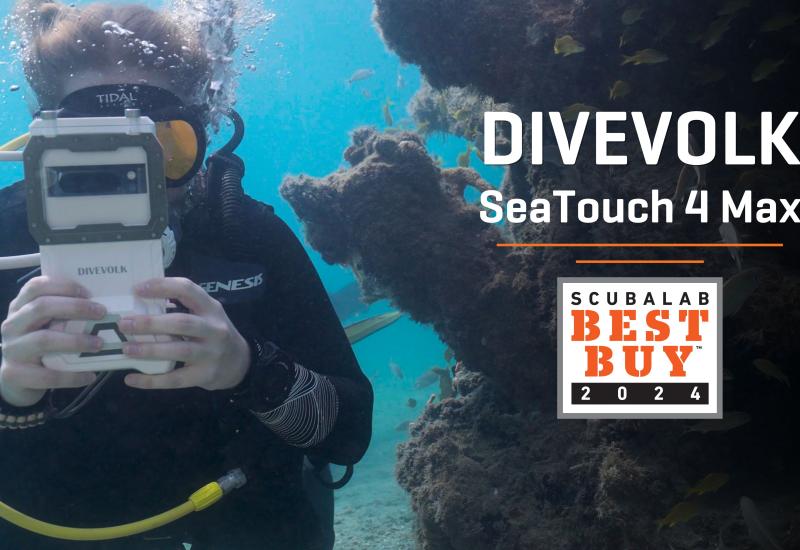Testing Scuba Regulators On The ANSTI Breathing Machine

Robby MyersIron Lung
The ANSTI system is an extremely accurate test designed to assist regulator engineers in the design, development and testing of their regs.
ScubaLab's gear reviews are two-fold. To get the most accurate picture of how new scuba diving gear stacks up we perform both in-water ergonomics tests and objective lab based testing.
Our latest regulator review utilized an ANSTI wet breathing simulator to measure the effort, or work of breathing, required to move air through a reg as it is subjected to a precise series of depths and breathing rates.
What is an ANSTI Breathing Machine?
the ANSTI system has become the gold standard for testing regulators. It stresses regs to extremes under controlled conditions while factoring in diving depth, breathing rate, and mechanical and flow characteristics like valve cracking effort, exhaust resistance and positive pressure.
Due to the expense of a fully loaded test system, only a handful of manufacturers actually own an ANSTI system, and in the United States there is only one independent test facility that has one — Dive Lab, based in Panama City Beach, Florida, where Scuba Lab conducts all its regulator testing.
How We Test
Tests are performed at an HP supply pressure of 725 to 760 psi. This exerts additional stress on the regulators. If a regulator can perform well at this low supply pressure, it will invariably perform even better at a higher supply pressure.
Regs are tested in the face-forward position; regs with breathing adjustments are set at the wide-open/no free-flow point.
The ANSTI machine pressurizes the test chamber to simulate depths of 132 fsw (feet of sea water), 165 fsw and 198 fsw. Each “breath” by the machine moves 2.5 liters of air through the regulator; we do this at breathing rates of 15, 25 and 30 breaths per minute (BPM). These precisely measured volumes of air — 2.5 liters multiplied by the breathing rate — are called Respiratory Minute Volumes (RMVs).
Throughout the test, the simulator monitors effort required to “breathe” in and out, measuring the work of breathing in joules per liter (j/l). As depth and breathing rate increase (and with it, the density of the air being moved), the work gets harder. Most modern regs are able to perform at 37 RMV and 132 fsw with less than 1 j/l of work, a big improvement over regs of a generation ago.
If a reg doesn’t exceed our test parameters while achieving the test requirements — the toughest of which the fittest human scuba diver would be hard pressed to keep up for more than a couple of minutes — we push it into even more extreme conditions.
We don’t test on the simulator for a pass/ fail grade, but rather to objectively gauge performance in carefully controlled conditions. You can see how each reg performed on the breathing simulator in the charts that accompany the reviews.
Why do we test at these depths and breathing volumes?
15 BPM @ 132 fsw — This represents the maximum recreational depth at a somewhat aggressive breathing rate.
30 BPM @ 132 fsw — This simulates the potential demand at maximum recreational depth for a diver at an extremely heavy work rate, or loosely simulates two divers buddy breathing at a somewhat aggressive rate.
25 BPM @ 165 fsw — This represents the European conformance standard EN250 (you’ve seen this stamped on your regulator). This is also the depth and breathing rate commonly used by manufacturers when determining a reg’s performance.
25 BPM @ 198 fsw — This is the U.S. Navy’s Class A test depth and breathing rate, although the Navy uses a higher HP supply pressure than we do.

Courtesy of Dive LabFacts and Figures
The top chart shows a reg breathing at 15 BPM at 135 fsw while the bottom chart is the same reg running 25 BPM at 201 fsw.
Work of Breathing
The charts to the right show how the ANSTI breathing simulator measures the stress that deeper water and increased breathing rates impose on a reg’s ability to move gas.
The charts are loops that go clockwise, beginning at the far right as inhalation begins and moving to far left where exhalation starts. Numbers below the centerline show, in millibars, negative pressure required to inhale; numbers above the centerline show positive pressure needed to exhale.
The top chart shows the reg at 132 fsw breathing at 15 breaths per minute — easy work for this reg, measured by the ANSTI simulator at just 1.04 j/l, an excellent score in our rating system.
The bottom chart shows the same reg but now at 201 fsw breathing at 25 breaths per minute. With the greater ambient pressure, air density and respiration rate, breathing requires considerably more effort, measured by the ANSTI machine as 1.8 j/l. That’s still good performance in our scoring system, but the difference is extra effort a diver would feel.
Want to know more about how ScubaLab tests the latest gear?
Check out these behind-the-scenes galleries from our dive light test and our BC test.










